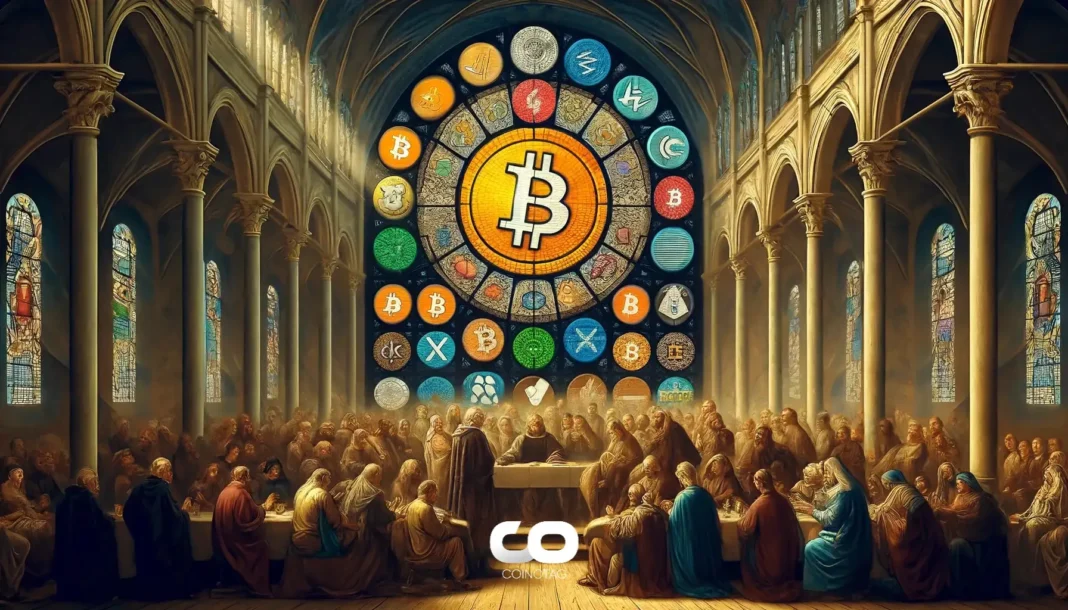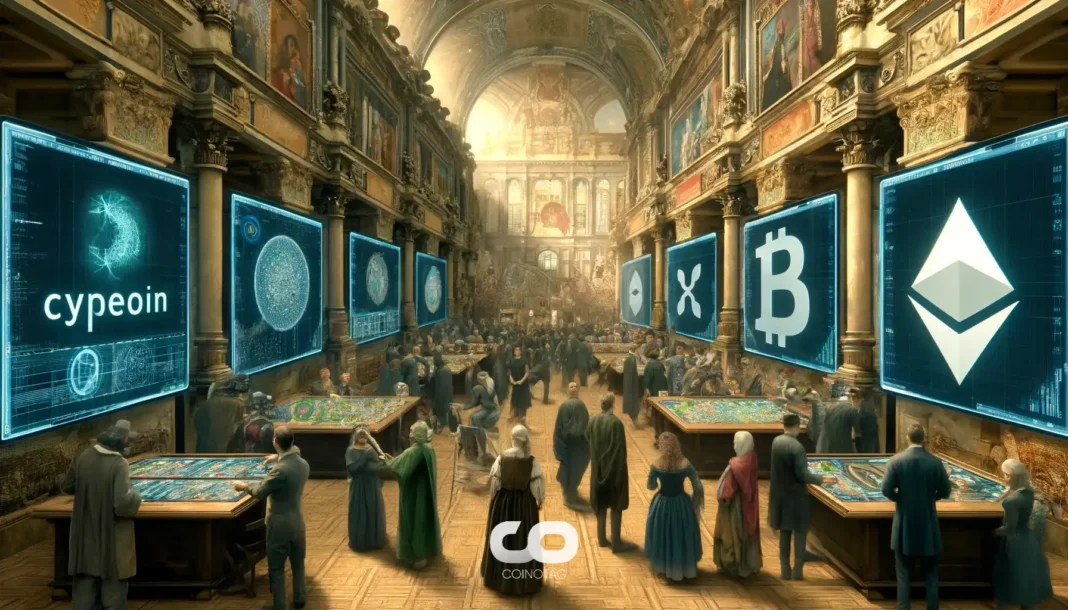| COINOTAG recommends • Exchange signup |
| 💹 Trade with pro tools |
| Fast execution, robust charts, clean risk controls. |
| 👉 Open account → |
| COINOTAG recommends • Exchange signup |
| 🚀 Smooth orders, clear control |
| Advanced order types and market depth in one view. |
| 👉 Create account → |
| COINOTAG recommends • Exchange signup |
| 📈 Clarity in volatile markets |
| Plan entries & exits, manage positions with discipline. |
| 👉 Sign up → |
| COINOTAG recommends • Exchange signup |
| ⚡ Speed, depth, reliability |
| Execute confidently when timing matters. |
| 👉 Open account → |
| COINOTAG recommends • Exchange signup |
| 🧭 A focused workflow for traders |
| Alerts, watchlists, and a repeatable process. |
| 👉 Get started → |
| COINOTAG recommends • Exchange signup |
| ✅ Data‑driven decisions |
| Focus on process—not noise. |
| 👉 Sign up → |
-
Circle’s USDC stablecoin has officially launched on the XRP Ledger (XRPL), enabling direct integration without the need for bridging solutions.
-
This collaboration between Ripple and Circle enhances USDC’s cross-chain capabilities, opening new avenues for developers and institutional users.
-
Markus Infanger, Senior Vice President at RippleX, emphasized that regulated stablecoins like USDC on XRPL will unlock innovative use cases by leveraging the ledger’s compliance and low-cost settlement features.
Circle’s USDC goes live on the XRP Ledger, boosting cross-chain functionality and enabling faster, compliant global payments for institutions and developers.
USDC Integration on XRP Ledger Enhances Cross-Chain Stablecoin Utility
Circle’s recent announcement that USDC is now natively supported on the XRP Ledger marks a significant milestone in the stablecoin ecosystem. This integration eliminates the need for bridging, allowing seamless access to USDC liquidity directly on XRPL’s high-speed and secure network. For developers, institutions, and users, this means faster transaction settlements and reduced operational complexity when moving funds across blockchain networks.
With Circle Mint and Circle APIs fully supporting USDC on XRPL, the stablecoin issuer has expanded its infrastructure to facilitate a wide range of applications. These include enterprise-level B2B payments, cross-border remittances, and decentralized finance (DeFi) services. The native presence of USDC on XRPL also provides enhanced compliance features, which are critical for institutional adoption and regulatory alignment.
Ripple and Circle’s Strategic Partnership to Drive Global Crypto Adoption
The collaboration between Ripple and Circle is more than a technical integration; it represents a strategic alignment aimed at accelerating the adoption of digital assets in the global economy. Ripple’s ambition to capture a significant share of global SWIFT liquidity by 2030 aligns with Circle’s goal to expand USDC’s reach across multiple blockchains. By combining their strengths, both companies are positioning themselves at the forefront of the evolving Web3 landscape.
| COINOTAG recommends • Professional traders group |
| 💎 Join a professional trading community |
| Work with senior traders, research‑backed setups, and risk‑first frameworks. |
| 👉 Join the group → |
| COINOTAG recommends • Professional traders group |
| 📊 Transparent performance, real process |
| Spot strategies with documented months of triple‑digit runs during strong trends; futures plans use defined R:R and sizing. |
| 👉 Get access → |
| COINOTAG recommends • Professional traders group |
| 🧭 Research → Plan → Execute |
| Daily levels, watchlists, and post‑trade reviews to build consistency. |
| 👉 Join now → |
| COINOTAG recommends • Professional traders group |
| 🛡️ Risk comes first |
| Sizing methods, invalidation rules, and R‑multiples baked into every plan. |
| 👉 Start today → |
| COINOTAG recommends • Professional traders group |
| 🧠 Learn the “why” behind each trade |
| Live breakdowns, playbooks, and framework‑first education. |
| 👉 Join the group → |
| COINOTAG recommends • Professional traders group |
| 🚀 Insider • APEX • INNER CIRCLE |
| Choose the depth you need—tools, coaching, and member rooms. |
| 👉 Explore tiers → |
Markus Infanger highlighted that regulated stablecoins like USDC are vital gateways connecting traditional finance with blockchain technology. The XRPL’s built-in compliance tools and low-cost settlement mechanisms make it an ideal platform for institutional and retail users seeking reliable and efficient payment solutions. This partnership also underscores the importance of regulatory adherence, as both firms maintain close cooperation with US and international regulators to ensure compliance and foster trust.
Implications for Developers, Institutions, and the Broader Crypto Ecosystem
The native integration of USDC on XRPL offers tangible benefits across the crypto ecosystem. Developers gain access to robust APIs that simplify the creation of innovative financial products, while exchanges and digital wallets can offer users streamlined onramps and offramps between fiat and USDC. Institutional traders benefit from faster settlement times and enhanced liquidity, which are crucial for managing large-scale transactions efficiently.
| COINOTAG recommends • Exchange signup |
| 📈 Clear interface, precise orders |
| Sharp entries & exits with actionable alerts. |
| 👉 Create free account → |
| COINOTAG recommends • Exchange signup |
| 🧠 Smarter tools. Better decisions. |
| Depth analytics and risk features in one view. |
| 👉 Sign up → |
| COINOTAG recommends • Exchange signup |
| 🎯 Take control of entries & exits |
| Set alerts, define stops, execute consistently. |
| 👉 Open account → |
| COINOTAG recommends • Exchange signup |
| 🛠️ From idea to execution |
| Turn setups into plans with practical order types. |
| 👉 Join now → |
| COINOTAG recommends • Exchange signup |
| 📋 Trade your plan |
| Watchlists and routing that support focus. |
| 👉 Get started → |
| COINOTAG recommends • Exchange signup |
| 📊 Precision without the noise |
| Data‑first workflows for active traders. |
| 👉 Sign up → |
Moreover, this integration is expected to catalyze the growth of DeFi applications on XRPL by providing a stable and regulated asset that can be used as collateral, for lending, or in other financial instruments. As stablecoins increasingly become a fundamental component of global currency flows, partnerships like this will be instrumental in shaping the future of digital finance.
Conclusion
The launch of USDC on the XRP Ledger represents a pivotal development in the stablecoin and blockchain space, combining the strengths of two industry leaders to enhance cross-chain functionality, regulatory compliance, and user accessibility. This partnership not only facilitates faster and more cost-effective global payments but also lays the groundwork for broader institutional adoption and innovation within the Web3 ecosystem. As Ripple and Circle continue to expand their collaboration, stakeholders can expect increased opportunities for seamless digital asset integration and financial inclusion worldwide.
| COINOTAG recommends • Traders club |
| ⚡ Futures with discipline |
| Defined R:R, pre‑set invalidation, execution checklists. |
| 👉 Join the club → |
| COINOTAG recommends • Traders club |
| 🎯 Spot strategies that compound |
| Momentum & accumulation frameworks managed with clear risk. |
| 👉 Get access → |
| COINOTAG recommends • Traders club |
| 🏛️ APEX tier for serious traders |
| Deep dives, analyst Q&A, and accountability sprints. |
| 👉 Explore APEX → |
| COINOTAG recommends • Traders club |
| 📈 Real‑time market structure |
| Key levels, liquidity zones, and actionable context. |
| 👉 Join now → |
| COINOTAG recommends • Traders club |
| 🔔 Smart alerts, not noise |
| Context‑rich notifications tied to plans and risk—never hype. |
| 👉 Get access → |
| COINOTAG recommends • Traders club |
| 🤝 Peer review & coaching |
| Hands‑on feedback that sharpens execution and risk control. |
| 👉 Join the club → |
| COINOTAG recommends • Members‑only research |
| 📌 Curated setups, clearly explained |
| Entry, invalidation, targets, and R:R defined before execution. |
| 👉 Get access → |
| COINOTAG recommends • Members‑only research |
| 🧠 Data‑led decision making |
| Technical + flow + context synthesized into actionable plans. |
| 👉 Join now → |
| COINOTAG recommends • Members‑only research |
| 🧱 Consistency over hype |
| Repeatable rules, realistic expectations, and a calmer mindset. |
| 👉 Get access → |
| COINOTAG recommends • Members‑only research |
| 🕒 Patience is an edge |
| Wait for confirmation and manage risk with checklists. |
| 👉 Join now → |
| COINOTAG recommends • Members‑only research |
| 💼 Professional mentorship |
| Guidance from seasoned traders and structured feedback loops. |
| 👉 Get access → |
| COINOTAG recommends • Members‑only research |
| 🧮 Track • Review • Improve |
| Documented PnL tracking and post‑mortems to accelerate learning. |
| 👉 Join now → |







